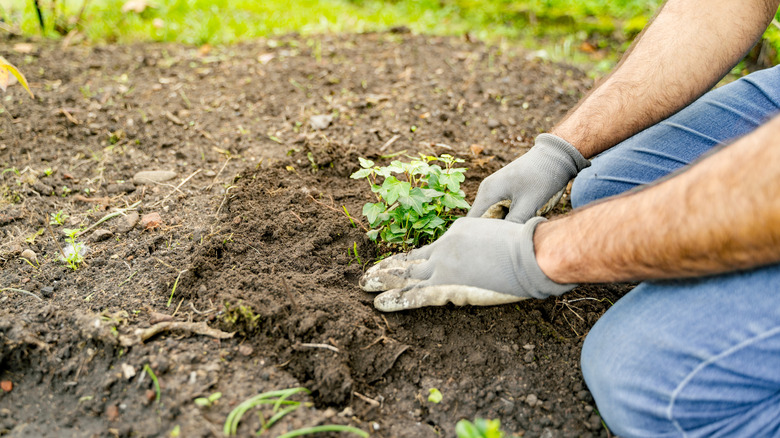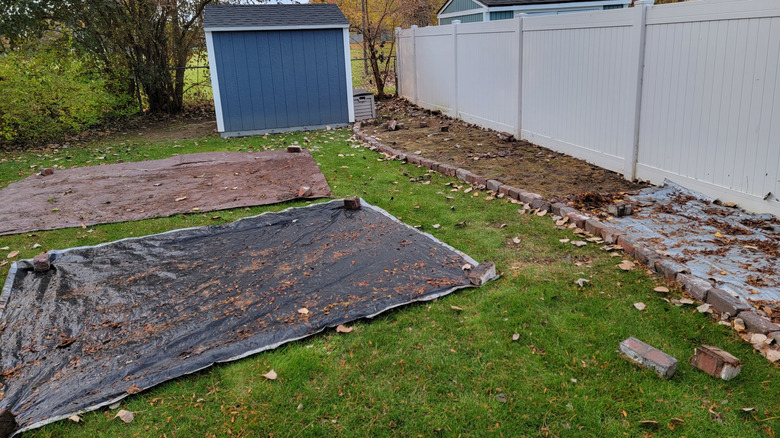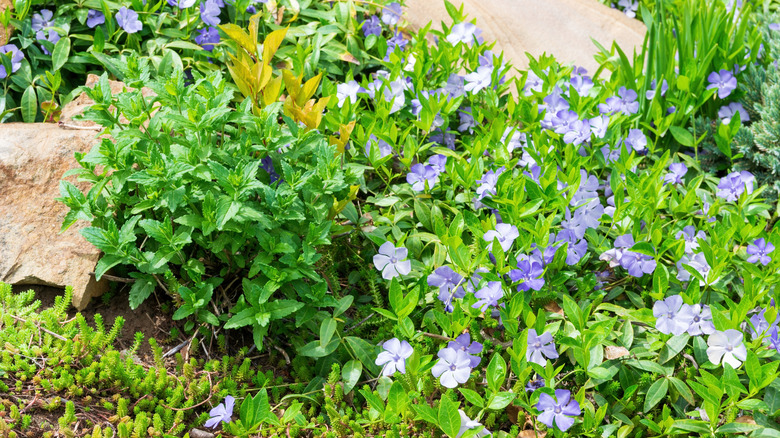How To Kill Your Lawn & Prepare It For A Beautiful Ground Cover Replacement
We may receive a commission on purchases made from links.
If the grass is always greener on the other side, it might be time to give your yard a new look. Many people are switching from traditional grass lawns to a no-mow ground cover approach. Not only can this type of landscaping save water, it also suppresses weeds and could have the added benefit of welcoming native plants into your yard if you select a native ground cover. It can also save you precious weekend time that would otherwise be spent mowing and caring for grass.
But how do you get rid of that pesky grass that you just spent years watering, mowing, fertilizing, and nurturing? Before you reach for an herbicide, it's wise to consider other more natural alternatives like digging up, tilling, or suffocating the old grass. It sounds savage, but you wouldn't want your new ground cover bed to be toxic to your seedlings and starter plants. By following a few simple steps, you can have a beautiful and barren (but healthy) bed ready for fresh, new plantings.
According to the U.S. Environmental Protection Agency, the average household uses close to 100 gallons of water per day for outdoor applications, which include landscaping irrigation. And of that amount, up to 50% is wasted due to inefficient watering practices and environmental factors like wind and evaporation. Multiply this by more than 100 million households in the U.S. and it adds up to massive amounts of water waste, which is why many homeowners are snuffing out their grass for less thirsty alternatives such as ground cover.
Say goodbye to grass with these lawn killing techniques
One of the easiest ways to get rid of grass is by smothering it. This can be done by laying several layers of cardboard or newspaper atop the area to be killed. Covering these materials with mulch will help hold them down while also reducing the unsightly appearance of your project's early stages. You can achieve the same goal with a single layer of plastic or transparent tarp, using a process called solarizing. This method heats the ground causing a greenhouse effect which suffocates everything underneath. If you prefer to go even more natural, skip the layering material and just use a heavy coat of mulch. Whichever method you choose, moisten the soil before applying and expect it to take at least a month to completely kill the grass.
Other methods of killing your old lawn require a bit more elbow grease, but can significantly shorten the amount of preparation time. Tilling and digging are both options to remove sod that involve a decent amount of manual labor. Tilling requires the use of either a hand-operated or motorized rototiller to break through the existing sod and turn up a new layer of soil. After tilling, remove larger chunks of grass, weeds, or roots before replanting. If you opt for the digging method, all you need is a good sharp-edged shovel or a serrated tool called a sod cutter. Using this technique, you simply cut down into the existing sod until you reach under the roots. Then, pry the grass up in strips. As you remove each piece of sod, shake it to return some of the topsoil to the ground.
Out with the old (lawn), in with the new (ground cover)
Once your new ground cover bed is grass-free, it's time for the fun part: planting! Depending on your motivations for replacing your lawn, you may opt for drought-resistant plants, something that spreads as quickly as possible, or perhaps your goal is a dazzling display of colors and textures that bloom throughout the growing season. There are literally hundreds of ground cover options to choose from. Because climate zones and yard conditions vary greatly, there is no one-size-fits-all approach. Instead, head to a local nursery and see what they offer for your area and for your specific needs. If you want to do some homework first, Clemson University has put out a helpful factsheet with ground cover suggestions for different conditions that also offers some care and planting tips.
After your new plants are snugly nestled into their new homes, be sure to add a layer of mulch to help the ground cover fill in. Fine shredded wood, aged bark, dried leaves, or pine needles are types of mulch that will discourage weeds in the area as the ground cover establishes itself. Don't worry, these mulches won't hinder the ground cover from spreading. Now just sit back and relax while your new ground cover takes over and you can turn your attention to other matters. No-mow yard work is your new future!


